
LOADING ...
In response to evolving domestic opinion, eMedals Inc has made the conscious decision to remove the presentation of German Third Reich historical artifacts from our online catalogue. For three decades, eMedals Inc has made an effort to preserve history in all its forms. As historians and researchers, we have managed sensitive articles and materials with the greatest of care and respect for their past and present social context. We acknowledge the growing sentiments put forth by the Canadian public and have taken proactive actions to address this opinion.

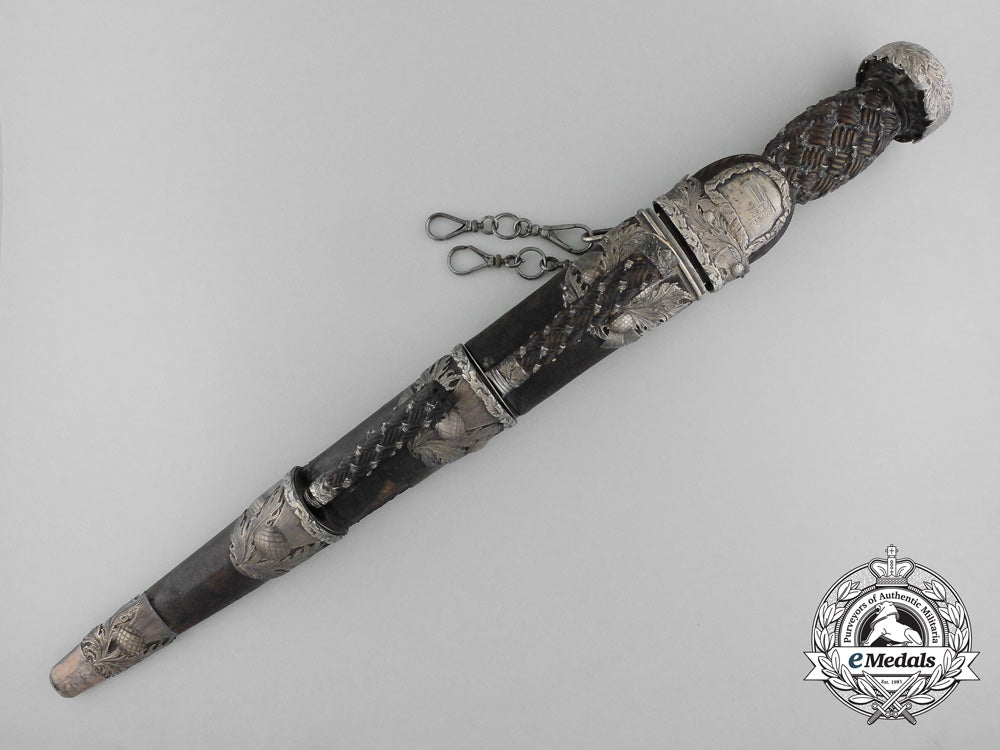
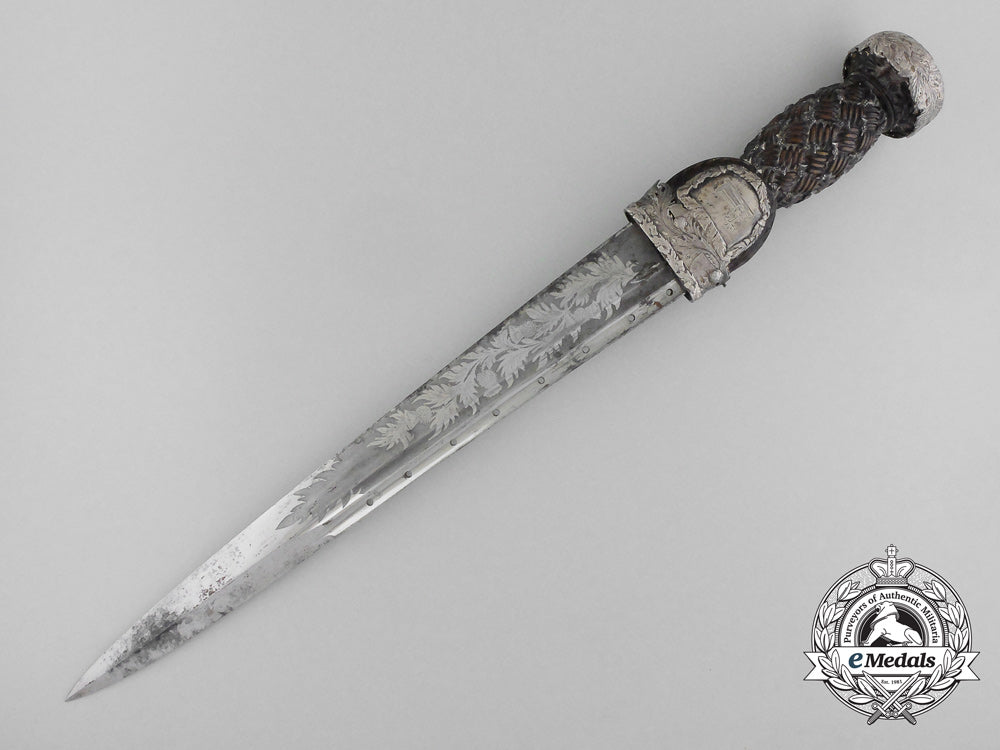
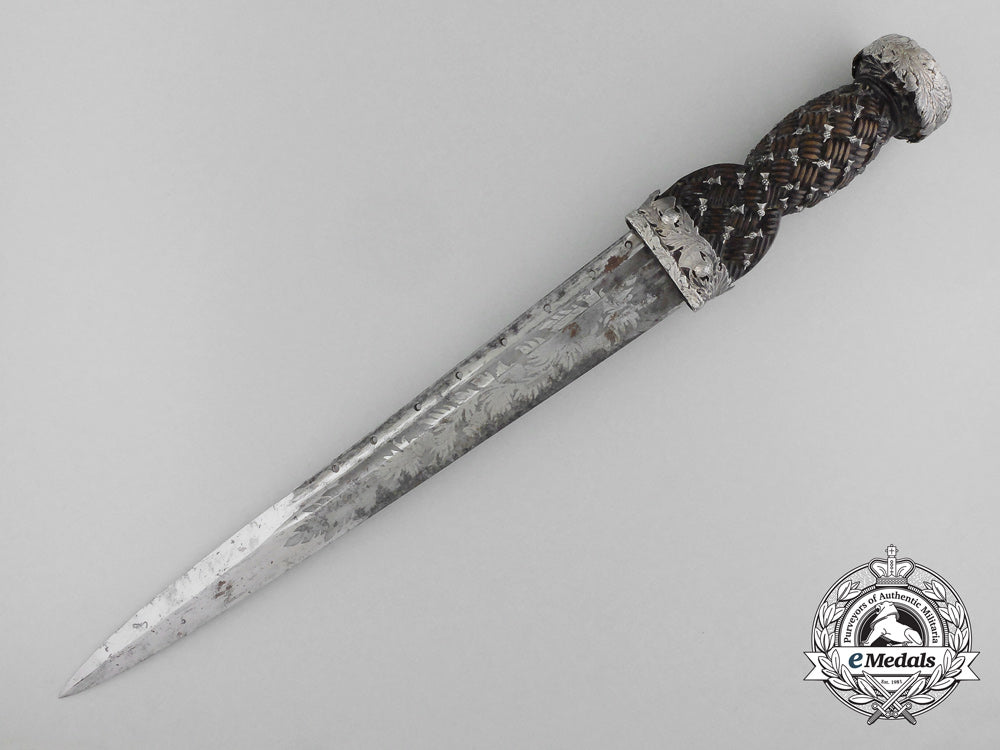
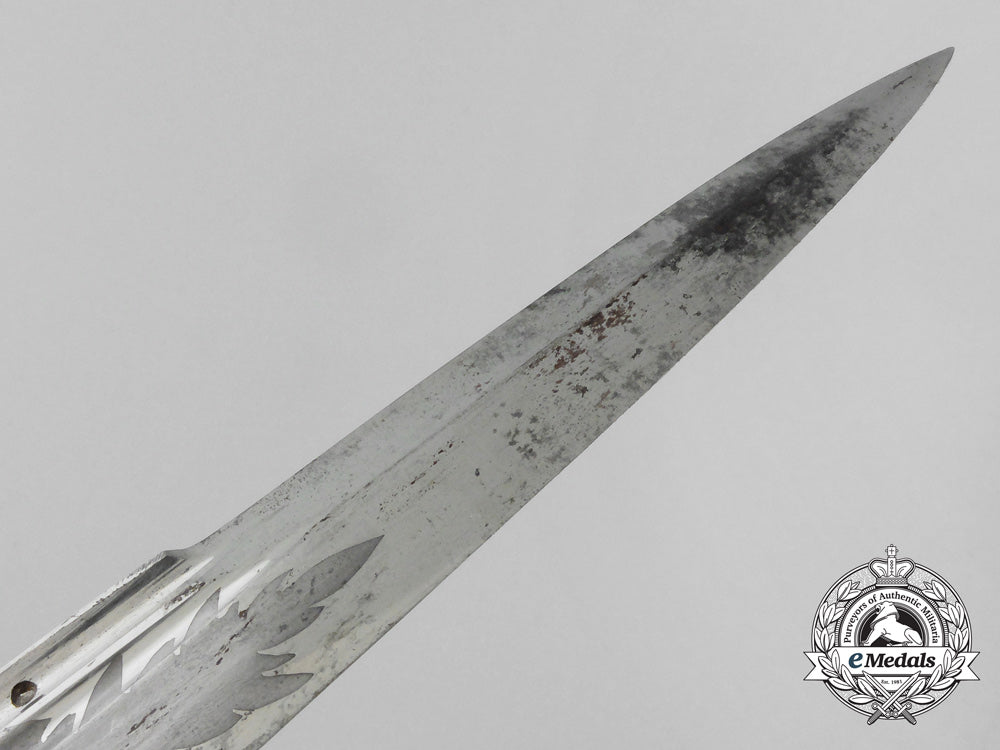
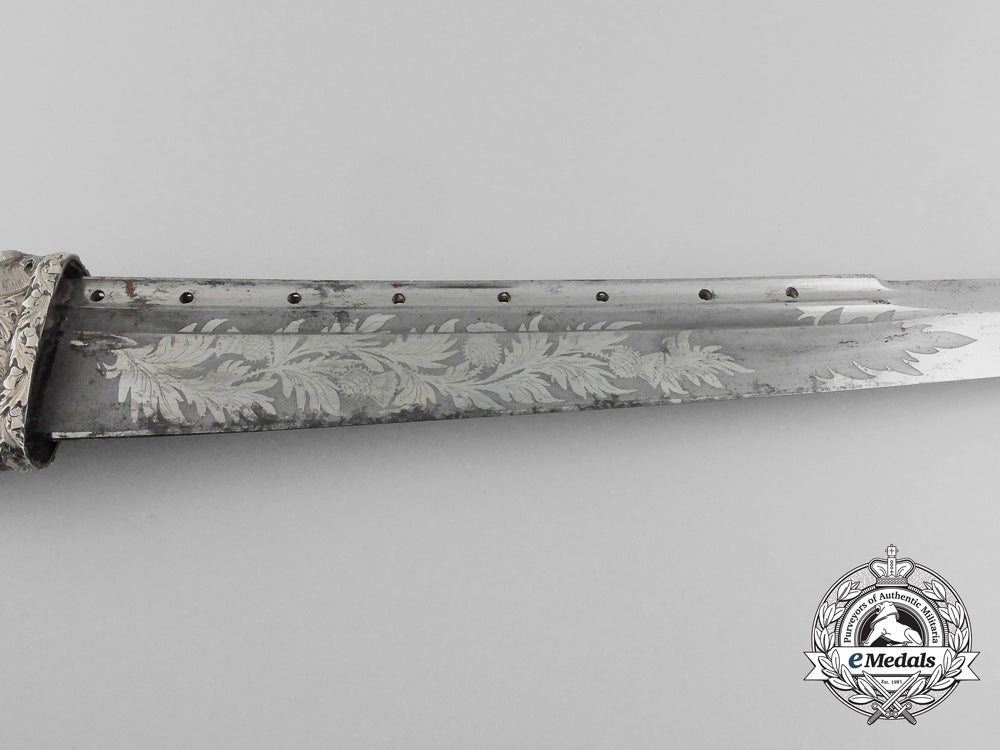
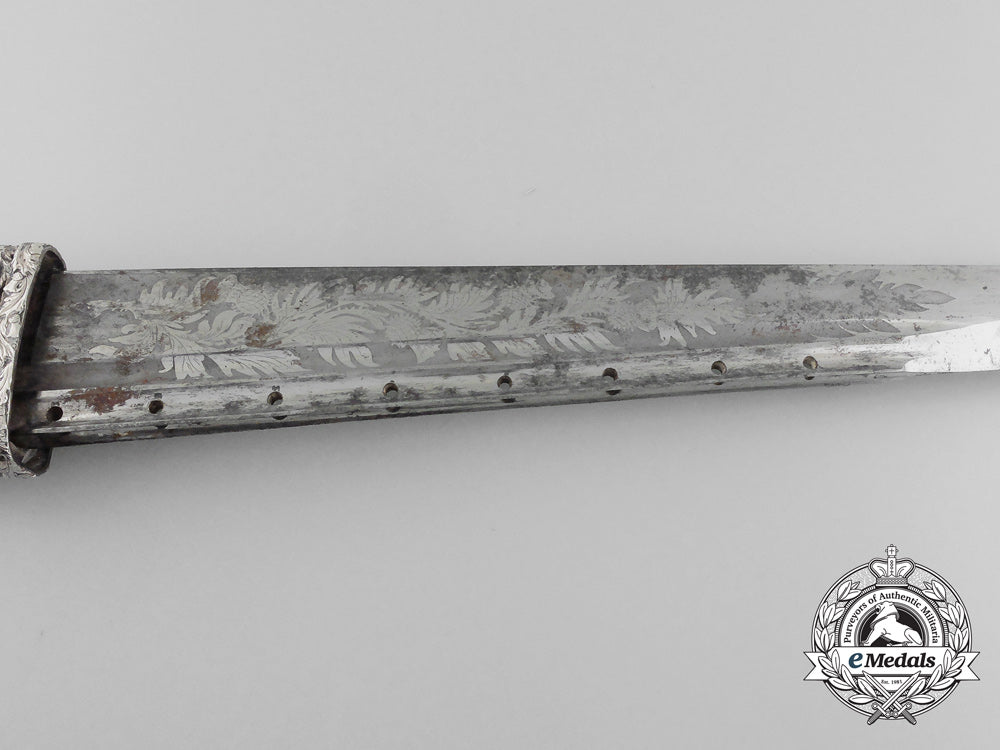
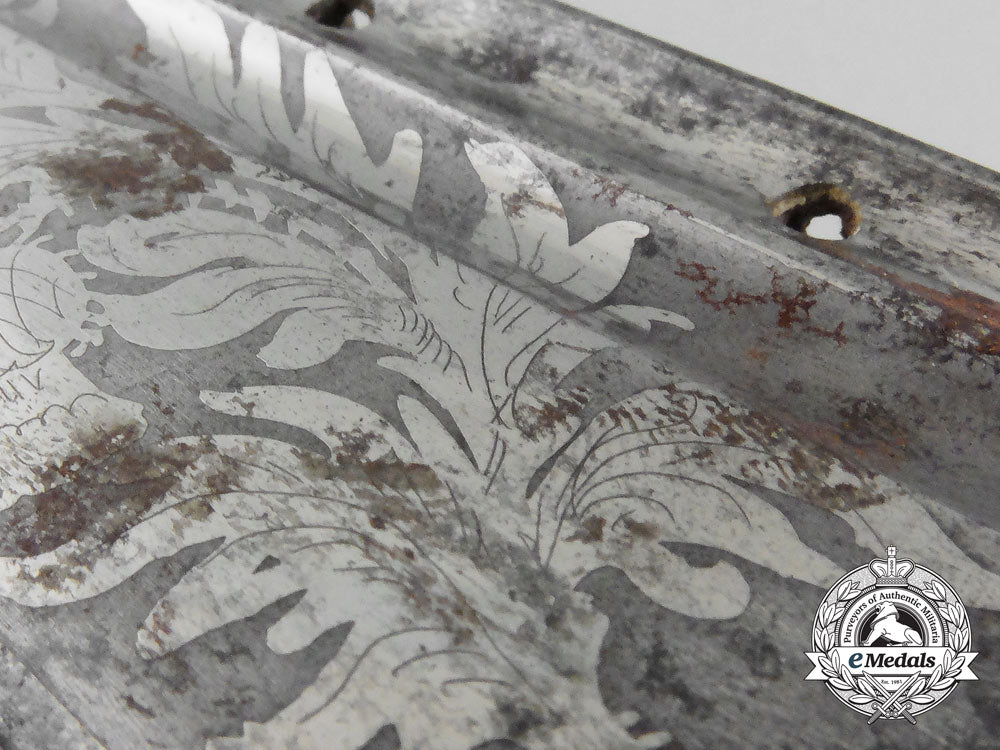
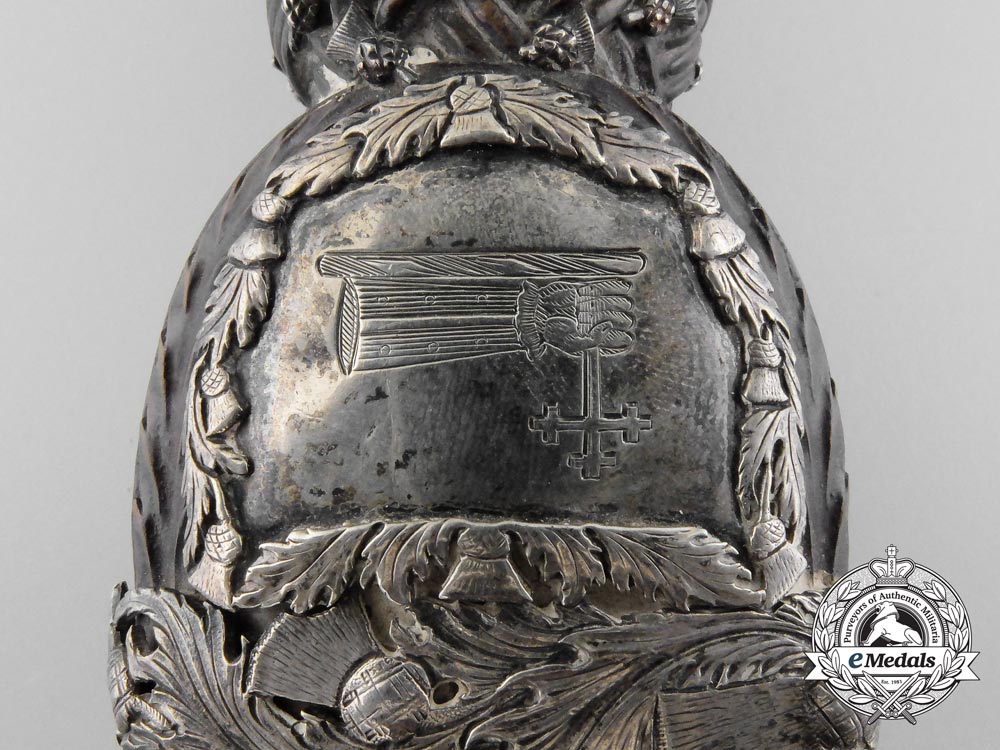
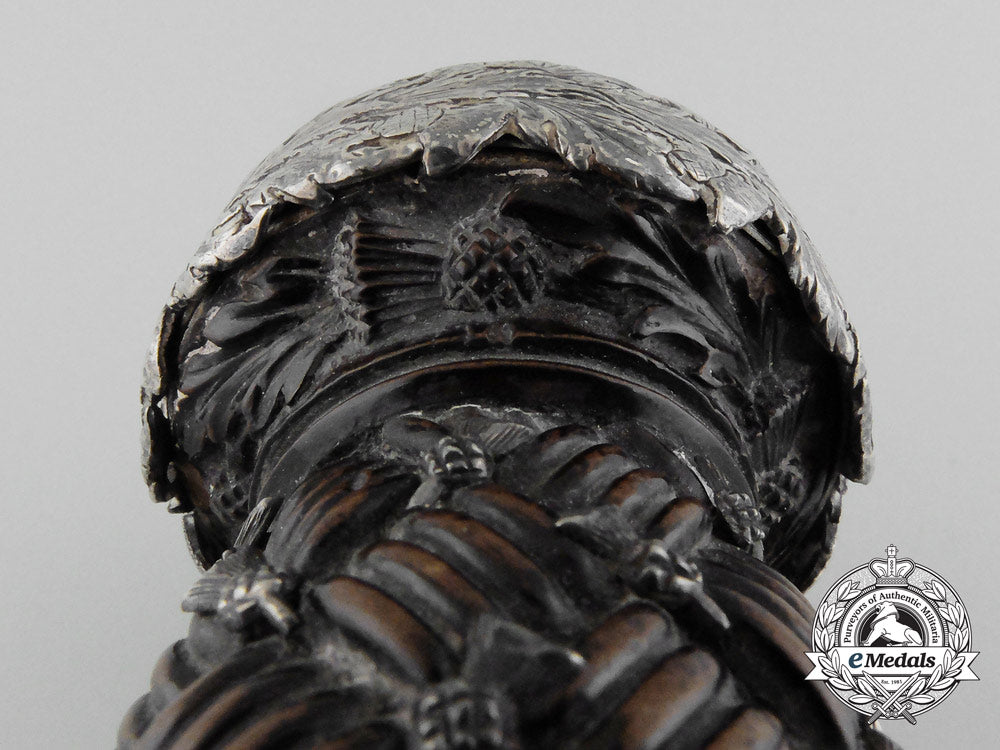
An Ornate 1850'S Officer's Highland Regimental Dirk
An Ornate 1850'S Officer's Highland Regimental Dirk
SKU: ITEM: GB6180
Current Bid:
Your Max Bid:
Bid History:
Time Remaining:
Couldn't load pickup availability
Shipping Details
Shipping Details
eMedals offers rapid domestic and international shipping. Orders received prior to 12:00pm (EST) will be shipped on the same business day.* Orders placed on Canadian Federal holidays will be dispatched the subsequent business day. Courier tracking numbers are provided for all shipments. All items purchased from eMedals can be returned for a full monetary refund or merchandise credit, providing the criteria presented in our Terms & Conditions are met. *Please note that the addition of a COA may impact dispatch time.
Shipping Details
eMedals offers rapid domestic and international shipping. Orders received prior to 12:00pm (EST) will be shipped on the same business day.* Orders placed on Canadian Federal holidays will be dispatched the subsequent business day. Courier tracking numbers are provided for all shipments. All items purchased from eMedals can be returned for a full monetary refund or merchandise credit, providing the criteria presented in our Terms & Conditions are met. *Please note that the addition of a COA may impact dispatch time.
Description
Description
This dirk features a 305 mm long magnetic steel blade, with a sharp edge and having a very sharp tip. There are twin fullers running from the base of the blade to just past the mid-point, the upper fuller prominently displaying eight holes, with holes positioned along the blade spine, matching the positions of those on the blade and acting as a venting system, an etched flowing thistle motif on the blade that parallels the fullers, with the leafing of the motif overlapping the inside fuller. It retains its crossgraining, with scratching overall, common to extraction and return to the scabbard, exhibiting surface rust, with a natural shine, very fine. The black leather washer at the base of the blade has hardened but remains intact. The reinforcing collar band is silver, exhibiting an engraved flowing thistle-patterned design, with the front emblazoned with a semi-circular cap with an engraving illustrating a gloved right hand lying on a platform and holding a cross, the perimeter of the cap trimmed in a flowing thistle-pattern design. The traditional ebony handle is hand-carved wood, with a thatched pattern throughout, with some of the ebony finish having worn off, highlighted by small embedded silver studs, each stud incorporating a thistle design and totalling sixty in number, with one missing on the reverse. The cap on the pommel is silver, engraved with a matching flowing thistle-patterned design, and finished with a cairngorm stone, a type of smoky quartz rock crystal, the cairngorm stone free of chipping and exhibiting very little contact, the dagger measuring 423 mm in length. The blade fits very tightly into the accompanying scabbard that is emblazoned with three silver bands, each with an engraved image of a thistle on the front and that carries around to the reverse, the lower two bands trimmed along their upper edge with a flowing thistle-patterned design, the middle band slightly loose. The scabbard itself is wrapped in a lacquered pebbled black leather, exhibiting wear on the front between the middle and lower bands, exposing the underlying wooden frame. The chape is also silver, engraved with the image of a thistle on the front that carries around to the reverse like the three bands, the chape with a snub-nosed end held in place by one pin, the two side pins missing and forcing the chape to be slightly loose. The middle and lower bands protrude from the body, each topped by a silver platform with an oval hole in the middle, the upper platform housing a knife, the lower platform housing a fork, each utensil made of magnetic steel with an ebony handle in hand-carved wood in a thatched pattern. Each utensil handle has small embedded silver studs, each stud incorporating a thistle design, totalling thirty-six in number on the knife and twenty-seven in number on the fork, with the latter missing five studs. The knife has a cap on the pommel that is silver with a flowing thistle-patterned design, and finished with a cairngorm stone, while the fork is missing both its cap and cairngorm stone, which like the missing studs on the dirk handle and fork handle, have been lost to time. It has a very wide silver throat that is held in place by two pins and comes with two small loops on the reverse, each loop attached to a very large loop and housing clips at either end, the clips joined together via a ring, the scabbard measuring 322 mm in length. Very fine.
Footnote: The Scottish Dirk (also "Highland dirk", Scottish Gaelic "Biodag") is the traditional and ceremonial sidearm of the officers of Scottish Highland regiments. The traditional Scottish dirk is a development of the second half of the 17th century, when it became a popular item of military equipment in the Jacobite Risings. The modern development of the Scottish dirk into a ceremonial weapon occurred during the 19th century. The shape of the grip developed from the historical more cylindrical form to a shape intended to represent the thistle. Fancier fittings, often of silver, became popular shortly after 1800. The hilts of modern Scottish dirks are often carved from dark colored wood such as bog oak or ebony. Hilts and scabbards are often lavishly decorated with silver mounts and have pommels set with cairngorm stones. The Cairngorm mountain range in the eastern Scottish Highlands was the sole source of this unique mineral, a smoky quartz crystal which took its name from the mountain range in which it was found. Most cairngorm crystals were a deep, rich yellow-brown color, though there were some which were more brown-grey in color. A small amount of ferric oxide in the quartz is what gave cairngorm stones their distinctive colour, and this particular type of smoky quartz was only found in the Cairngorm mountain range of Scotland. The blades are single edged with decorative file work known as "jimping" on the unsharpened back edge of the blade. When worn, the dirk normally hangs by a leather strap known as a "frog" from a dirk belt, which is a wide leather belt having a large, usually ornate buckle, that is worn around the waist with a kilt. Many Scottish dirks carry a smaller knife and fork which fit into compartments on the front of the sheath, and a smaller knife known as a sgian dubh is also worn tucked into the top of the hose when wearing a kilt.
Description
This dirk features a 305 mm long magnetic steel blade, with a sharp edge and having a very sharp tip. There are twin fullers running from the base of the blade to just past the mid-point, the upper fuller prominently displaying eight holes, with holes positioned along the blade spine, matching the positions of those on the blade and acting as a venting system, an etched flowing thistle motif on the blade that parallels the fullers, with the leafing of the motif overlapping the inside fuller. It retains its crossgraining, with scratching overall, common to extraction and return to the scabbard, exhibiting surface rust, with a natural shine, very fine. The black leather washer at the base of the blade has hardened but remains intact. The reinforcing collar band is silver, exhibiting an engraved flowing thistle-patterned design, with the front emblazoned with a semi-circular cap with an engraving illustrating a gloved right hand lying on a platform and holding a cross, the perimeter of the cap trimmed in a flowing thistle-pattern design. The traditional ebony handle is hand-carved wood, with a thatched pattern throughout, with some of the ebony finish having worn off, highlighted by small embedded silver studs, each stud incorporating a thistle design and totalling sixty in number, with one missing on the reverse. The cap on the pommel is silver, engraved with a matching flowing thistle-patterned design, and finished with a cairngorm stone, a type of smoky quartz rock crystal, the cairngorm stone free of chipping and exhibiting very little contact, the dagger measuring 423 mm in length. The blade fits very tightly into the accompanying scabbard that is emblazoned with three silver bands, each with an engraved image of a thistle on the front and that carries around to the reverse, the lower two bands trimmed along their upper edge with a flowing thistle-patterned design, the middle band slightly loose. The scabbard itself is wrapped in a lacquered pebbled black leather, exhibiting wear on the front between the middle and lower bands, exposing the underlying wooden frame. The chape is also silver, engraved with the image of a thistle on the front that carries around to the reverse like the three bands, the chape with a snub-nosed end held in place by one pin, the two side pins missing and forcing the chape to be slightly loose. The middle and lower bands protrude from the body, each topped by a silver platform with an oval hole in the middle, the upper platform housing a knife, the lower platform housing a fork, each utensil made of magnetic steel with an ebony handle in hand-carved wood in a thatched pattern. Each utensil handle has small embedded silver studs, each stud incorporating a thistle design, totalling thirty-six in number on the knife and twenty-seven in number on the fork, with the latter missing five studs. The knife has a cap on the pommel that is silver with a flowing thistle-patterned design, and finished with a cairngorm stone, while the fork is missing both its cap and cairngorm stone, which like the missing studs on the dirk handle and fork handle, have been lost to time. It has a very wide silver throat that is held in place by two pins and comes with two small loops on the reverse, each loop attached to a very large loop and housing clips at either end, the clips joined together via a ring, the scabbard measuring 322 mm in length. Very fine.
Footnote: The Scottish Dirk (also "Highland dirk", Scottish Gaelic "Biodag") is the traditional and ceremonial sidearm of the officers of Scottish Highland regiments. The traditional Scottish dirk is a development of the second half of the 17th century, when it became a popular item of military equipment in the Jacobite Risings. The modern development of the Scottish dirk into a ceremonial weapon occurred during the 19th century. The shape of the grip developed from the historical more cylindrical form to a shape intended to represent the thistle. Fancier fittings, often of silver, became popular shortly after 1800. The hilts of modern Scottish dirks are often carved from dark colored wood such as bog oak or ebony. Hilts and scabbards are often lavishly decorated with silver mounts and have pommels set with cairngorm stones. The Cairngorm mountain range in the eastern Scottish Highlands was the sole source of this unique mineral, a smoky quartz crystal which took its name from the mountain range in which it was found. Most cairngorm crystals were a deep, rich yellow-brown color, though there were some which were more brown-grey in color. A small amount of ferric oxide in the quartz is what gave cairngorm stones their distinctive colour, and this particular type of smoky quartz was only found in the Cairngorm mountain range of Scotland. The blades are single edged with decorative file work known as "jimping" on the unsharpened back edge of the blade. When worn, the dirk normally hangs by a leather strap known as a "frog" from a dirk belt, which is a wide leather belt having a large, usually ornate buckle, that is worn around the waist with a kilt. Many Scottish dirks carry a smaller knife and fork which fit into compartments on the front of the sheath, and a smaller knife known as a sgian dubh is also worn tucked into the top of the hose when wearing a kilt.









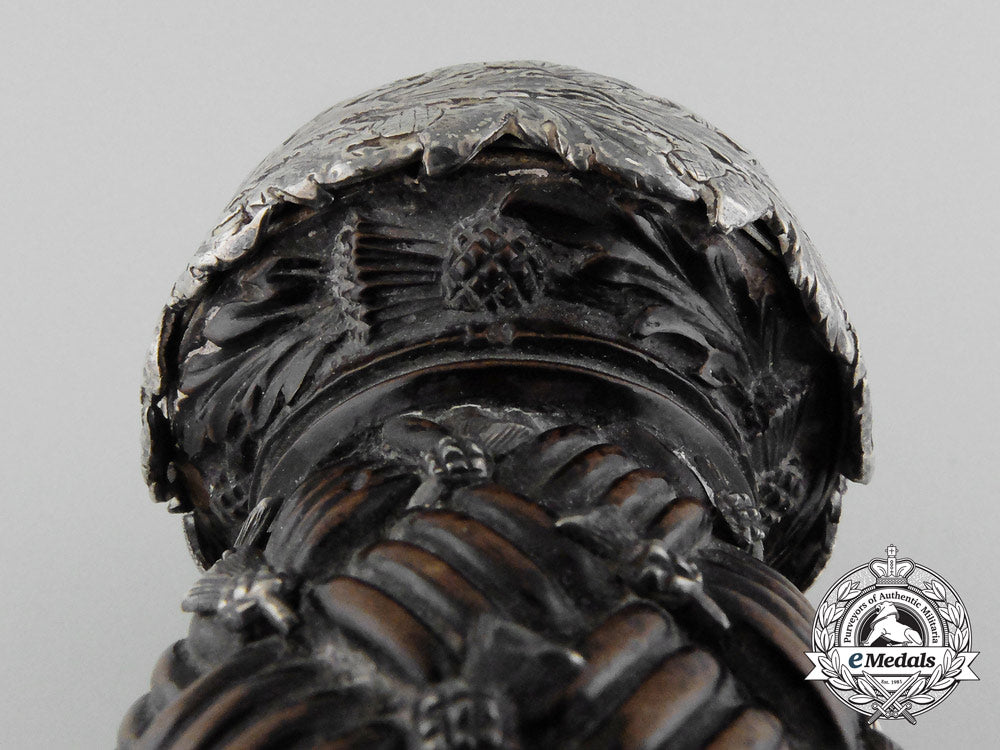
You May Also Like
eMedals Gift Card - $250
eMedals Gift Card - $500
eMedals Gift Card - $25
eMedals Gift Card - $50
Russia, Imperial. An Order of St. Vladimir, IV Class in Gold, Military Division, c.1905
EU24277
-
eMedals Gift Card - $250
Add to CartRegular price $250 USDRegular price USD Sale price $250 USDUnit price / per -
eMedals Gift Card - $500
Add to CartRegular price $500 USDRegular price USD Sale price $500 USDUnit price / per -
eMedals Gift Card - $25
Add to CartRegular price $25 USDRegular price USD Sale price $25 USDUnit price / per -
eMedals Gift Card - $50
Add to CartRegular price $50 USDRegular price USD Sale price $50 USDUnit price / per -
Russia, Imperial. An Order of St. Vladimir, IV Class in Gold, Military Division, c.1905
EU24277
Add to CartRegular price $3,450 USDRegular price $0 USD Sale price $3,450 USDUnit price / per
Do you have a similar item you are interested in selling?
Please complete the form and our client care representatives will contact you.
Sell Item
























